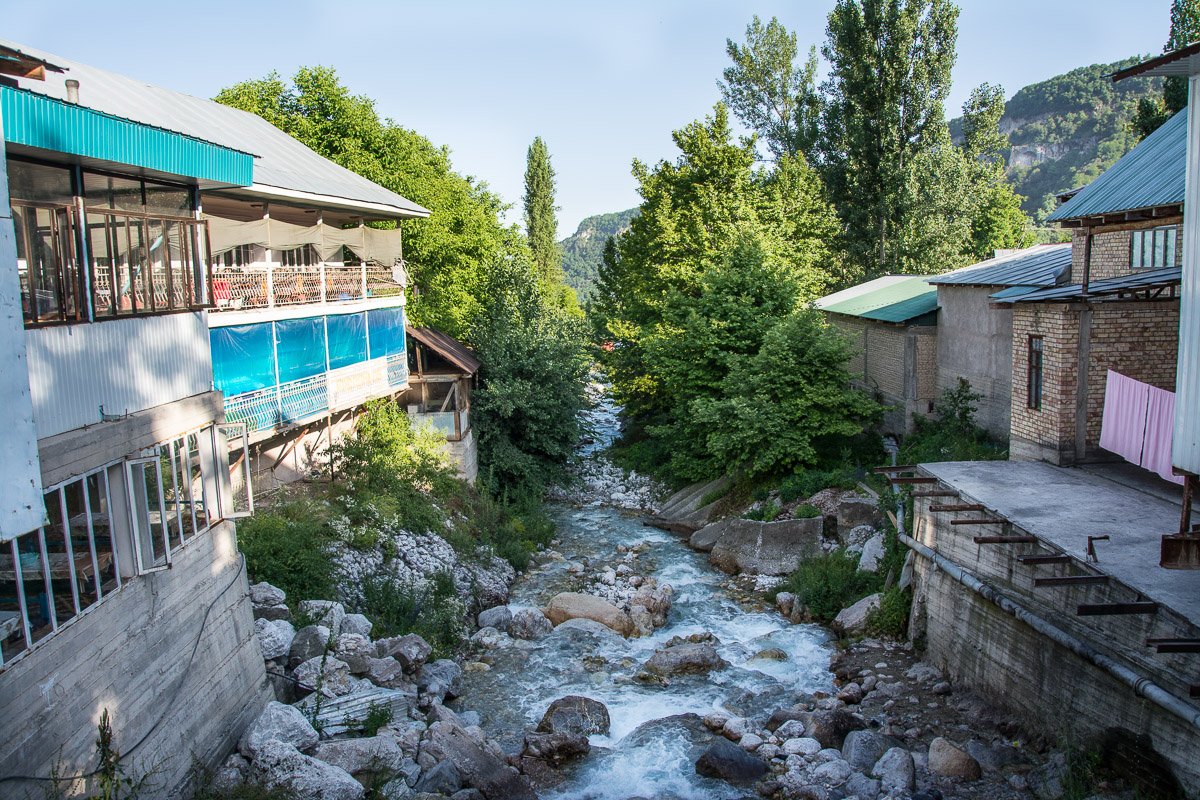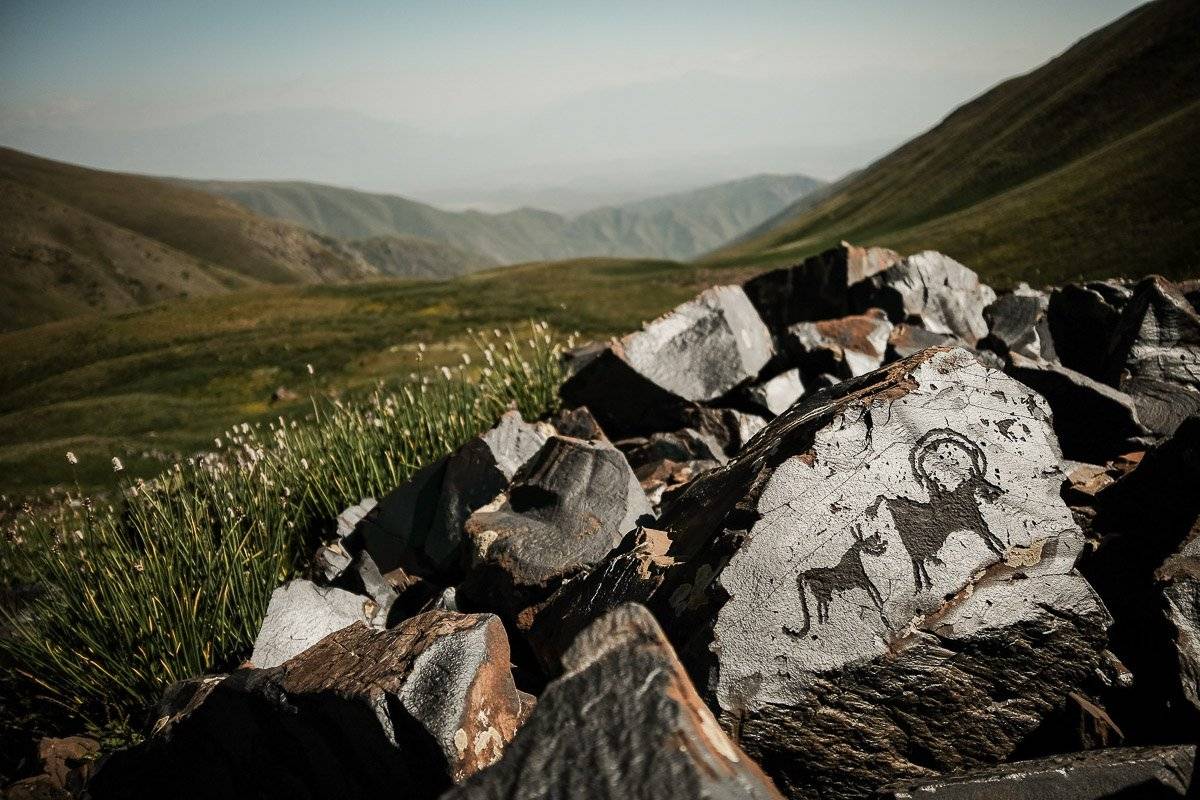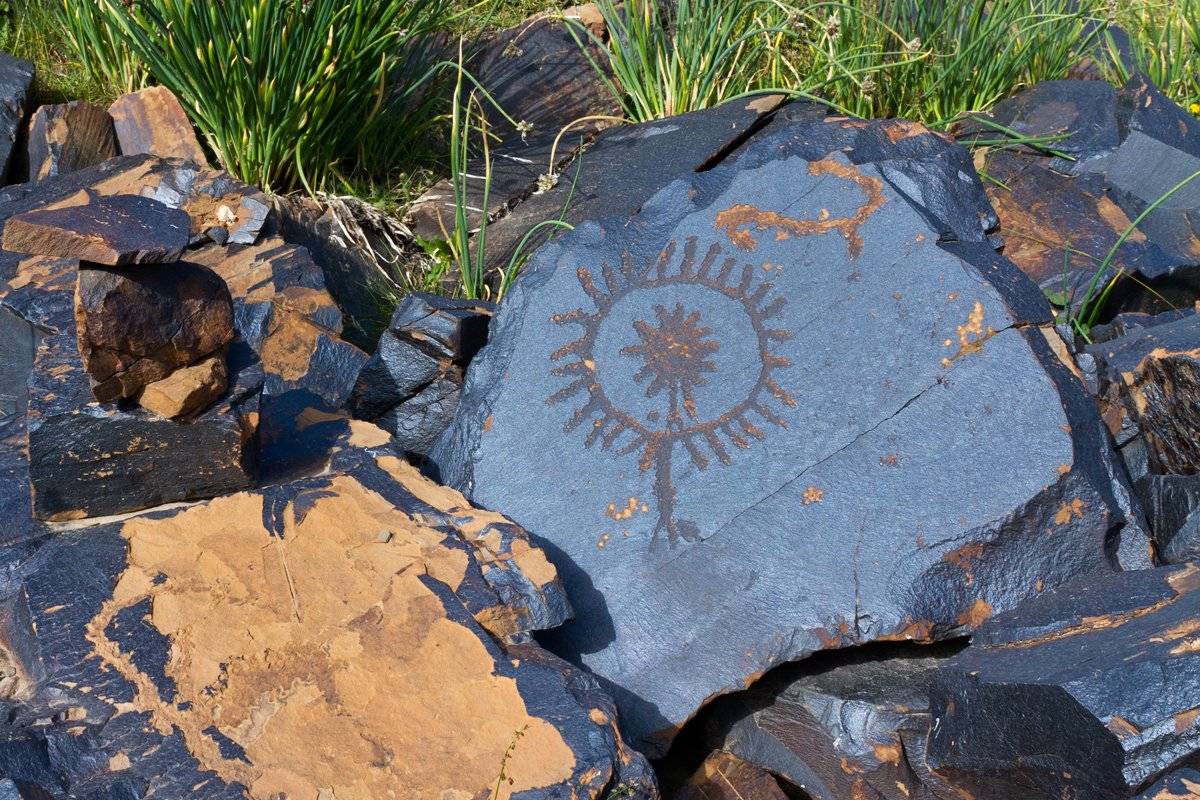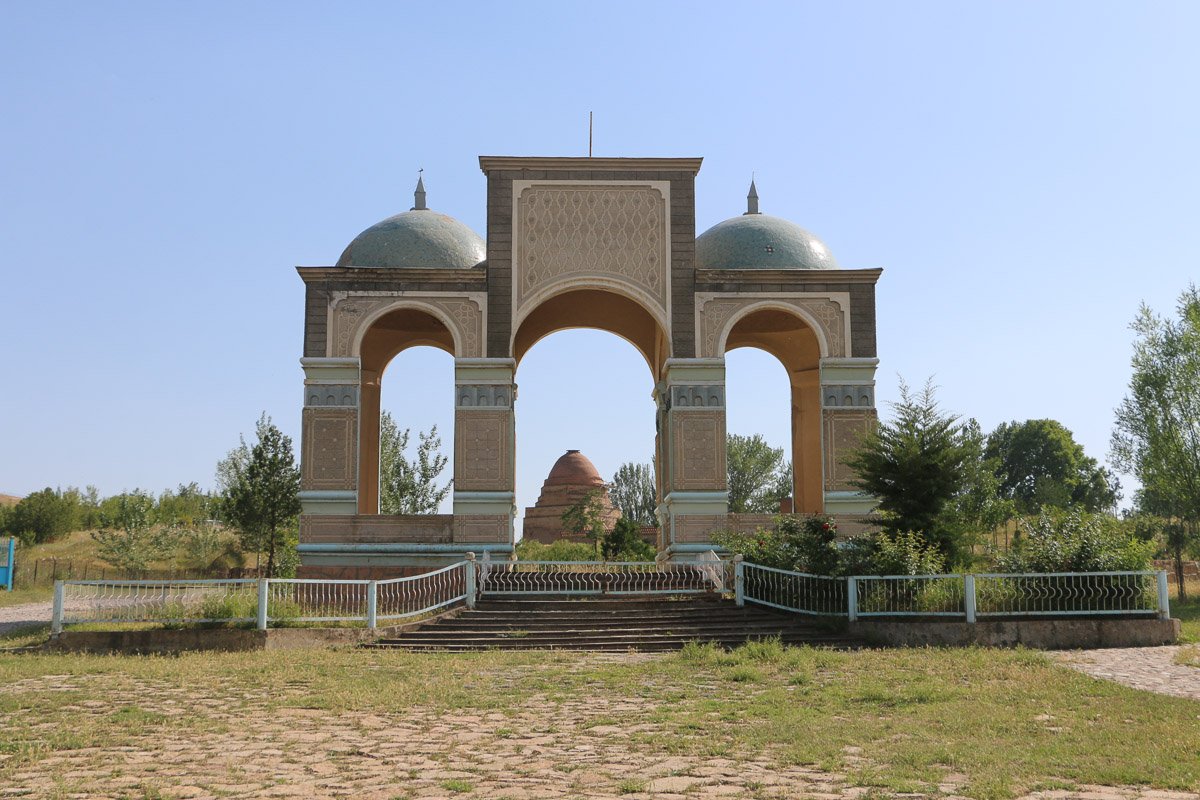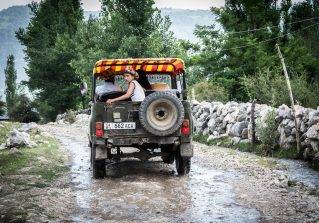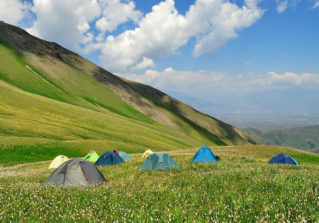Cultural and Historical Sites
Visit Jalal-Abad region's main cultural, historical and religious sites!
Jalal-Abad region has a long and fascinating history dating back several millennia. Persian nomadic Saka tribes roamed its lands, Alexander the Great carried walnuts from here back to Europe, Silk Road traders plied its lanes, the Kara-Khanid and Kokand Khanates and Kyrgyz tribes made their mark, and history saw the Russian Empire, Soviet Union and Kyrgyz independence unfold and leave impressions. All of this helped shape the unique spirit and multi-ethnic culture of the region that you see today. This is most apparent in the combination of traditions -- from Kyrgyz people with a nomadic heritage to Uzbeks who typically preferred a more settled, agrarian way of life. Travelers will have a chance to experience this and enjoy the attendant hospitality during village stays, market visits, or even on treks when encountering locals in the hills.
You can still see the physical remnants of the roaming nomadic tribes from thousands of years ago in the ancient drawings of Saimaluu-Tash petroglyphs, an outdoor museum with over 90,000 images. In addition, the Jalal-Abad region played an important role in the spread of Islam throughout the Fergana Valley and elsewhere in Kyrgyzstan and Central Asia. The region features several sacred sites, including Shakh Fazil Mausoleum and many smaller mazars (mausoleums), cemeteries and mosques where holy envoys and martyrs are buried. This is a devout land; you’ll often find pilgrims from near and far visiting these sacred places to pray and to pay their respects.
We share a few of Jalal-Abad region’s main cultural, religious and historical sites here to help you explore and go deeper into understanding this relatively undiscovered area.
Note: To help you plan your visit to Jalal-Abad region we assembled a Google Map marked with the main sites. We've also provided transportation information to the different historical sites, mostly from Jalal-Abad city. Your costs will vary when booking transportation from a guest house or from a starting point other than Jalal-Abad city. Use the maps linked below to locate these cultural, historical and religious sites in Jalal-Abad region.
If you would like a customized tour of any of the cultural or historical sites below, Jalal-Abad city, main natural attractions, or outdoor activities in the region, please get in touch with Destination Jalal-Abad. We can help you organize your trip. You can also check out the local tours page for more options.
Jalal-Abad Region: Top Cultural, Historical and Religious Sites
One of the most popular places to visit in Jalal-Abad region is Arslanbob village due to its laid-back feel, warm local hospitality, cool temperatures in the summer months, and proximity to the famous Arslanbob walnut forest. One of the things that makes Arslanbob unique is that its population is mainly ethnic Uzbek with 5% of its people of Kyrgyz, Russian, Tatar, Tajik and Chechen ethnicities. This allows travelers to experience an Uzbek village with its unique culture, cuisine, and traditions inside Kyrgyzstan.
Some of the village residents believe that they are descendants of Alexander the Great. When you observe some of the faces and eyes, you might believe it to be true. The local legend goes that in the 4th century BC local people gave to Alexander the Great walnuts from the nearby forest as he was returning from Asia to Europe. Those walnuts were then planted in Greece. Later, walnuts spread to the rest of Europe. There is also a more recent legend that involves Churchill, Stalin and Rolls-Royce.
Many travelers enjoy spending a few days in Arslanbob staying in a local family guest house or homestay to learn about and enjoy village life, as well as to go on treks or take horseback riding trips into the nearby Arslanbob walnut forest and to the nearby waterfalls. There is a local bazaar (market) where you can find local specialties like the famous Arslanbob walnuts or dried fruits. Ask around for the walnut oil factory to see how locals press walnuts collected in the nearby forest to create healthy and rich walnut oil.
Up the hill from the village is the turbaza, or amusement area with games and food stalls. It's a popular spot for both locals and visitors from nearby Uzbekistan. Not far from the village is the sacred mazar (mausoleum) of Arslanbob-Ata, a student and envoy of the prophet Mohammed.
How to get to Arslanbob village
From Jalal-Abad city to Arslansbob village, you can take a marshrutka to Bazar-Korgon village (40 KGS). From there, you will need to change to a marshrutka going to Arstanbap (60 KGS). Alternatively, you can directly go from Jalal-Abad city by private transport for 1000 KGS one way (1.5 hours). From Osh, there is a marshrutka that leaves daily in the early afternoon and takes around 4-5 hours.
With over 90,000 drawings, the Saimaluu-Tash Petroglyphs are the largest collection of petroglyphs in Central Asia and one of the largest in the world. The petroglyphs are located in Saimaluu-Tash State Nature Park on the eastern slope of the Fergana Ridge at 3,000 meters in altitude. The name “Saimaluu-Tash” means “patterned stone” in Kyrgyz, describing the basalt stones that serve as a canvas for the drawings. The complex consists of alpine meadows and spreads throughout the depth of the gorge with the petroglyphs concentrated in two main areas – Saimaluu Tash 1 covering around 1.3 square kilometers and Saimaluu-Tash 2 covering around one square kilometer.
The earliest petroglyph images are from 2,000-3,000 BC while the most recent ones date to the 1st-8th centuries AD. Given the broad expanse of time covering different historical periods, the differences in the style and themes of the drawings reflect the changes having occurred during that time. Many of the petroglyphs include images of wild and domestic animals, birds and people, geometric symbols and signs, images of the characters of deities, as well as many still unidentifiable objects. These images also the reflect religious beliefs and ideas about the world from the ancient people who once lived there.
The images from Saimaluu-Tash petroglyphs became one of the national symbols of Kyrgyzstan. The patterns and motifs are used widely in souvenirs, as well as in the World Nomad Games logo.
Our 2-day horse trek tour to Saimaluu-Tash is the perfect opportunity to explore the petroglyphs with a bit of horseback riding and trekking adventure.
Best time to visit Saimaluu-Tash Petroglyphs
The complex is only available to visit in summer. Best viewing times run from mid-July to August. Most of the year the petroglyphs lie under a layer of snow.
How to visit Saimaluu-Tash Petroglyphs
The Saimaluu-Tash State Nature Park is located in a remote mountainous area around 30 km from Kazarman village. Getting to the Saimaluu-Tash petroglyphs by car is impossible, but one can take a taxi from the village to get closer to the gorge. From there, it’s around 11 km on foot to the petroglyphs (22 km round-trip). You can also rent a horse for a quicker, easier journey. Once you get to the area, the petroglyphs are easily seen and you can walk around to explore.
Organizing a local guide and tour to Saimaluu-Tash Petroglyphs
The path to the petroglyphs is difficult and challenging so we recommend hiring a local guide to show you the way and to also explain the history. CBT Kazarman can assist with a guide, transport and even a horse (approximately 1,500-2,000 KGS) if you prefer to travel that way.
You can also take our Saimaluu-Tash Heritage Horse Trek Tour (2 days) that takes care of all the logistics, transport and support for an overnight horse trek in the mountains to explore the Saimaluu-Tash petroglyphs.
Where to stay near Saimaluu-Tash Petroglyphs
There are several homestay and guesthouse options available in nearby Kazarman village. Contact CBT Kazarman for help in arranging accommodation
How to get to Saimaluu-Tash Petroglyphs
From Jalal-Abad city to Kazarman village there are shared taxis that run infrequently for around 400-500 KGS/person. A private taxi costs around 5,000 KGS/car (one way) and takes around 4 hours. It is also sometimes possible to arrange transport from Naryn (4.5 hours).
The Jalal-Abad region is known for having many sacred Islamic sites and mausoleums where pilgrims from near and far come to visit and pray. One of these is the elaborate historical and architectural complex of Shakh Fazil Mausolum located in the Alabuka district of Jalal-Abad region.
The complex includes the sacred mountain Archa Mazar, the mausoleum of Shakh Fazil (11th century), a mosque (18th and 19th centuries), the mausoleums of Alamberdar and Safed-Bulan (XIX century), and the so-called cave of the holy hermit. The mausoleum of Shakh Fazil is unique in origin and importance, as it is one of the rare architectural monuments left from the Karakhani Era; it is also unique in all of Central Asia for its unusual shape and method of construction. The mausoleum has a square shape with a truncated pyramid dome. Its walls are covered with decorative ganch carvings typical from that time period.
Originally, the mausoleum was built as a royal tomb for members of the Karakhani dynasty, but it later became associated with an important milestone of the Islamization of the region when 2,700 Arab soldiers who were spreading Islam were killed by Zoroastrians during prayers. One of those who was killed was the leader of the campaign, Shakh Jarir, who belonged to the line of the Prophet Muhammad. One of Shakh Jarir’s wives survived. According to legend, it was she who washed and buried the bodies of the dead. Because of these horrific events the legend says that this dark-skinned Arab woman turned white and was named Safed Bulan, or "white woman." Shakh Fazil continued Shakh Jarir’s campaign, eventually establishing Islam in the northern Fergana Valley. He was later buried in the Karakhanid Mausoleum, which in turn was renamed the Shakh Fazil Mausoleum.
How to visit Shakh Fazil Mausoleum
The mausoleum complex is located around 10 km from Kerben village. A shared taxi from Jalal-Abad city to Kerben is around 400 KGS. You need to get a local taxi to Gulistan village for around 1,000 KGS. You can walk to the Shakh Fazil Mausoleum from there.
Alternatively, you can also go directly from Jalal-Abad city to Shakh Fazil Mausoleum for around 5,000 KGS (one way).
Where to stay near Shakh Fazil Mausoleum
The closest accommodation is in Ala-Buka village around 50 km away.

